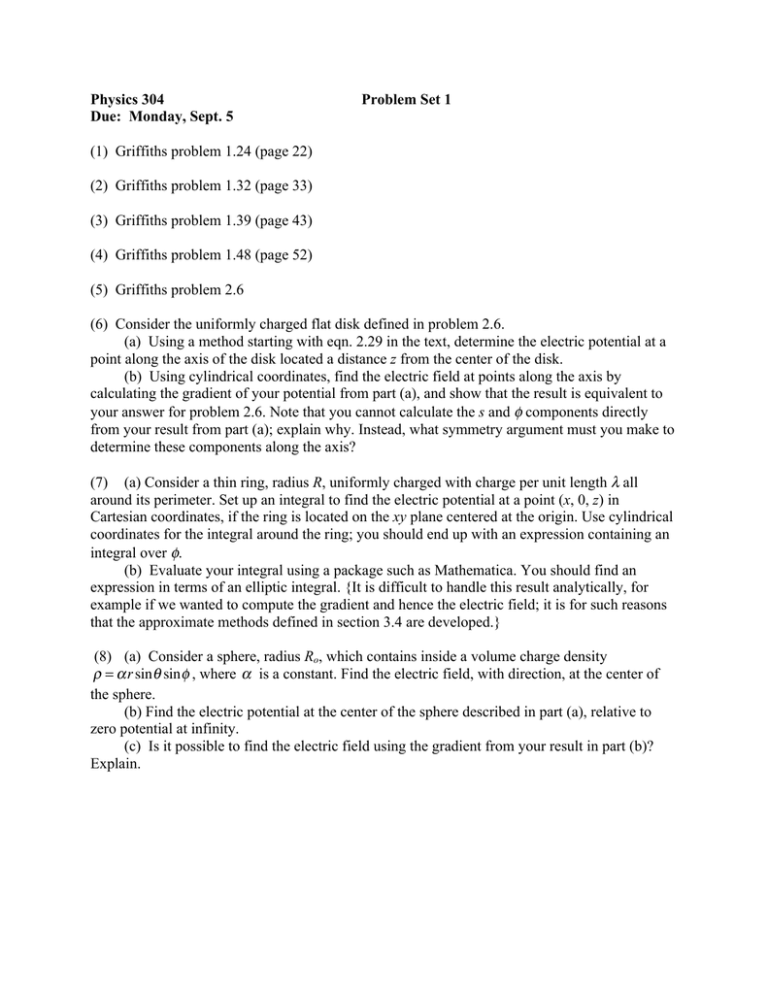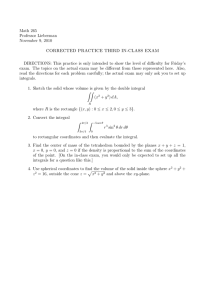Physics 304 Problem Set 1 Due: Monday, Sept. 5
advertisement

Physics 304
Due: Monday, Sept. 5
Problem Set 1
(1) Griffiths problem 1.24 (page 22)
(2) Griffiths problem 1.32 (page 33)
(3) Griffiths problem 1.39 (page 43)
(4) Griffiths problem 1.48 (page 52)
(5) Griffiths problem 2.6
(6) Consider the uniformly charged flat disk defined in problem 2.6.
(a) Using a method starting with eqn. 2.29 in the text, determine the electric potential at a
point along the axis of the disk located a distance z from the center of the disk.
(b) Using cylindrical coordinates, find the electric field at points along the axis by
calculating the gradient of your potential from part (a), and show that the result is equivalent to
your answer for problem 2.6. Note that you cannot calculate the s and φ components directly
from your result from part (a); explain why. Instead, what symmetry argument must you make to
determine these components along the axis?
(7) (a) Consider a thin ring, radius R, uniformly charged with charge per unit length λ all
around its perimeter. Set up an integral to find the electric potential at a point (x, 0, z) in
Cartesian coordinates, if the ring is located on the xy plane centered at the origin. Use cylindrical
coordinates for the integral around the ring; you should end up with an expression containing an
integral over φ.
(b) Evaluate your integral using a package such as Mathematica. You should find an
expression in terms of an elliptic integral. {It is difficult to handle this result analytically, for
example if we wanted to compute the gradient and hence the electric field; it is for such reasons
that the approximate methods defined in section 3.4 are developed.}
(8) (a) Consider a sphere, radius Ro, which contains inside a volume charge density
! = " r sin # sin $ , where ! is a constant. Find the electric field, with direction, at the center of
the sphere.
(b) Find the electric potential at the center of the sphere described in part (a), relative to
zero potential at infinity.
(c) Is it possible to find the electric field using the gradient from your result in part (b)?
Explain.



